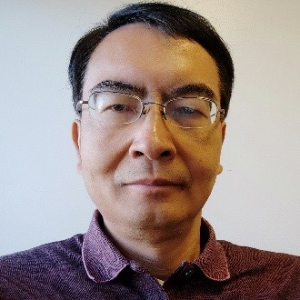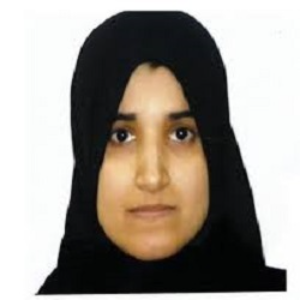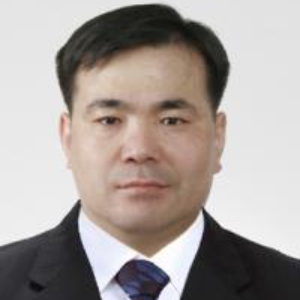Meera Ramrakhiani, Rani Durgavati University, India
Soaring petroleum price and global warming have fueled the intensive research for alternative energy sources and technologies. The reserve of fossil fuel is depleting very fast. The search for alternative source of energy has led to rapid strides in the utilization of solar energ [....] » Read More





















Title : Nanomaterials: new trends for preserving architectural heritage materials
Marcos Lanzon, Universidad Politécnica de Cartagena, Spain
Nanomaterials are widely used in biological, medical and engineering applications, but little is known on their use to preserve heritage materials. Architectural materials undergo irreversible deterioration due to chemical, physical and biological processes that occur on a wide v [....] » Read More
Title : Carbon Nanotubes and its application in Nanotechnology
Raymond Jagessar, University of Guyana, Guyana
Carbon nanotubes often refer to single-wall carbon nanotubes (SWCNTs) with diameters in the range of a nanometer. Single-wall carbon nanotubes are one of the allotropes of carbon, intermediate between fullerene cages and flat graphene. Carbon nanotubes also often refer to multi-w [....] » Read More
Title : Nanoparticles joining in smart additive manufacturing, design & evaluation
Soshu Kirihara, Osaka University, Japan
Complicated metal and ceramic components were fabricated by smart additive manufacturing, design and evaluation (Smart MADE). The functional structures were designed by computer graphics and fabricated by stereolithography of 3D printing. Metal and ceramic particles of 3 - 5 &mic [....] » Read More
Title : No more laundry?
Liqiu Wang, The University Of Hong Kong, Hong Kong
Liquid-repellent surfaces repel liquids instead of allowing droplets to adhere. These surfaces are important in many fields including self-cleaning clothes and kitchenware, enhanced heat transfer, and anti-fouling, anti-corrosive and drag reduction coatings. The dream of research [....] » Read More
Title : Electrical behaviour of composite materials with polymer matrix / metal powders
Doina Elena Gavrila, Universities Of Bucharest, Romania
The interest for polymer / metal filler composite materials results from the fact that their electrical properties are close to those of metals and the mechanical characteristics and processing methods are close to those of plastics. In such composites there is the possibility of [....] » Read More
Title : Characterization of nanoparticles in silicon dioxide food additives
Sadia Afrin Khan, Food and Drug Administration, United States
Food additives are added to food for their technical effect in food (e.g., emulsifier, stabilizer, thickener, anticaking agent, antioxidant, etc.). Food grade additives may have a particle size distribution that extends into the nanoscale range. Silicon dioxide, in its amorphous [....] » Read More
Title : Desalination via photothermal thin films
Donglu Shi, University of Cincinnati, United States
There has been an increasing need to utilize abundant seawater, via desalination, for a variety of uses, in particular agriculture in the arid regions that are highly vulnerable to the effects of climate change. Current desalination technologies provide effective solutions to the [....] » Read More
Title : Fabrication of a Resonant Waveguide Grating (RWG) with a single-step TiO2 sol-gel technological approach on planar and non-conventional substrate (tube)
Maria Usuga, Jean Monnet University, France
Resonant waveguide gratings (RWG), also called Guided-Mode Resonance (GMR) gratings, have been discovered several decades ago, and are known for their possibility to very strongly reflect an incident wave for special configurations of the parameters of the optical setup like wave [....] » Read More
Title : Fabrication of Si-based dielectric resonators: Combining etaloning with Mie resonances
Mario Khoury, Institut Matériaux Microélectronique Nanosciences de Provence, France
We use low-resolution optical lithography and plasma etching joined with solid state dewetting of crystalline, ultra-thin silicon on insulator (c-UT-SOI) to form monocrystalline, atomically-smooth, silicon-based Mie resonators in well controlled large periodic arrays. The dewe [....] » Read More
Title : Targeting receptor heterogeneity using molecular targeted photochemical-nanoplatform
Shazia Bano, Harvard Medical School, United States
The complex tissue architecture with enormous cellular diversity in malignant lesions and the tumor microenvironment, and its transformation with time is a pivotal driver of treatment resistance. Molecular targeted photonanomedicine offer unique capabilities and has held promise [....] » Read More
Title : Synthesis and characterization of semicarbazide based U(VI) complexes and their application in electrochemical sensors
Chandra Mohan, K. R. Mangalam University, India
Diverse research have been reported for designing a sensor by caring open chain and macrocyclic compounds operating system through transition metal, which display a rich and versatile redox activity. Chemical sensors are devices, which can deliver realtime and online information [....] » Read More
Title : Unprecedented Redox scavenging signature alongwith antioxidant action of silver nanoparticle coupled with Andrographispaniculata(AP-Ag NP) against carbon tetrachloride (CCl4) induced toxicity in mice
Soumendra Darbar, Jadavpur University, India
Nano technology possesses several branches including nanomedicine, which is the most promising field in the future medicine and is a probable therapeutic agent in prevention and medication of life threatening diseases through ROS inhibition. Therapeutic potential and antioxidant [....] » Read More
Title : Chitosan-olive oil microparticles for phenylethyl isothiocyanate delivery
Ezequiel Coscueta, Universidade Católica Portuguesa, Portugal
Phenylethyl isothiocyanate (PEITC) is released from the enzymatic hydrolysis of gluconasturtiin, the most abundant glucosinolate found in watercress (a vegetable from the family Brassicaceae) by the enzyme myrosinase. Among all the isothiocyanates, PEITC is one of the most extens [....] » Read More
Title : The role of nanotechnologies in hydrocarbon energy
Aleksandr Ya Khavkin, Peoples' Friendship University of Russia (RUDN), Russian Federation
Nanotechnologies the approach means purposeful regulation of properties of objects on molecular and above molecular a level (0,1-100 nanometers), determining fundamental parameters of physical objects. It takes place in sciences about the Earth in sphere oil&gas recovery. Pro [....] » Read More
Title : Inertial clocks and remote non-simultaneity
Robert Buenker, University of Wuppertal, Germany
There has been an increasing need to utilize abundant seawater, via desalination, for a variety of uses, in particular agriculture in the arid regions that are highly vulnerable to the effects of climate change. Current desalination technologies provide effective solutions to the [....] » Read More